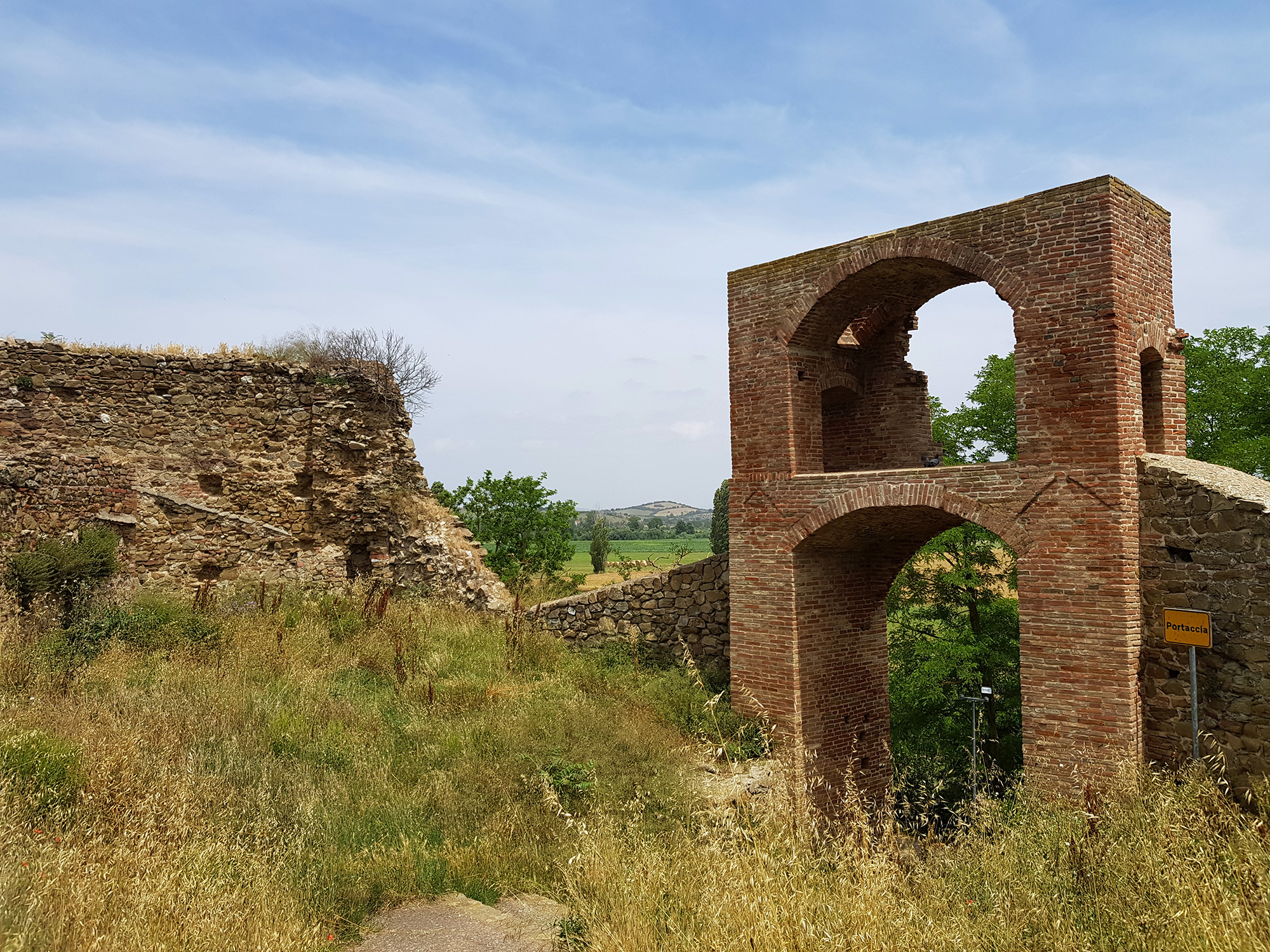
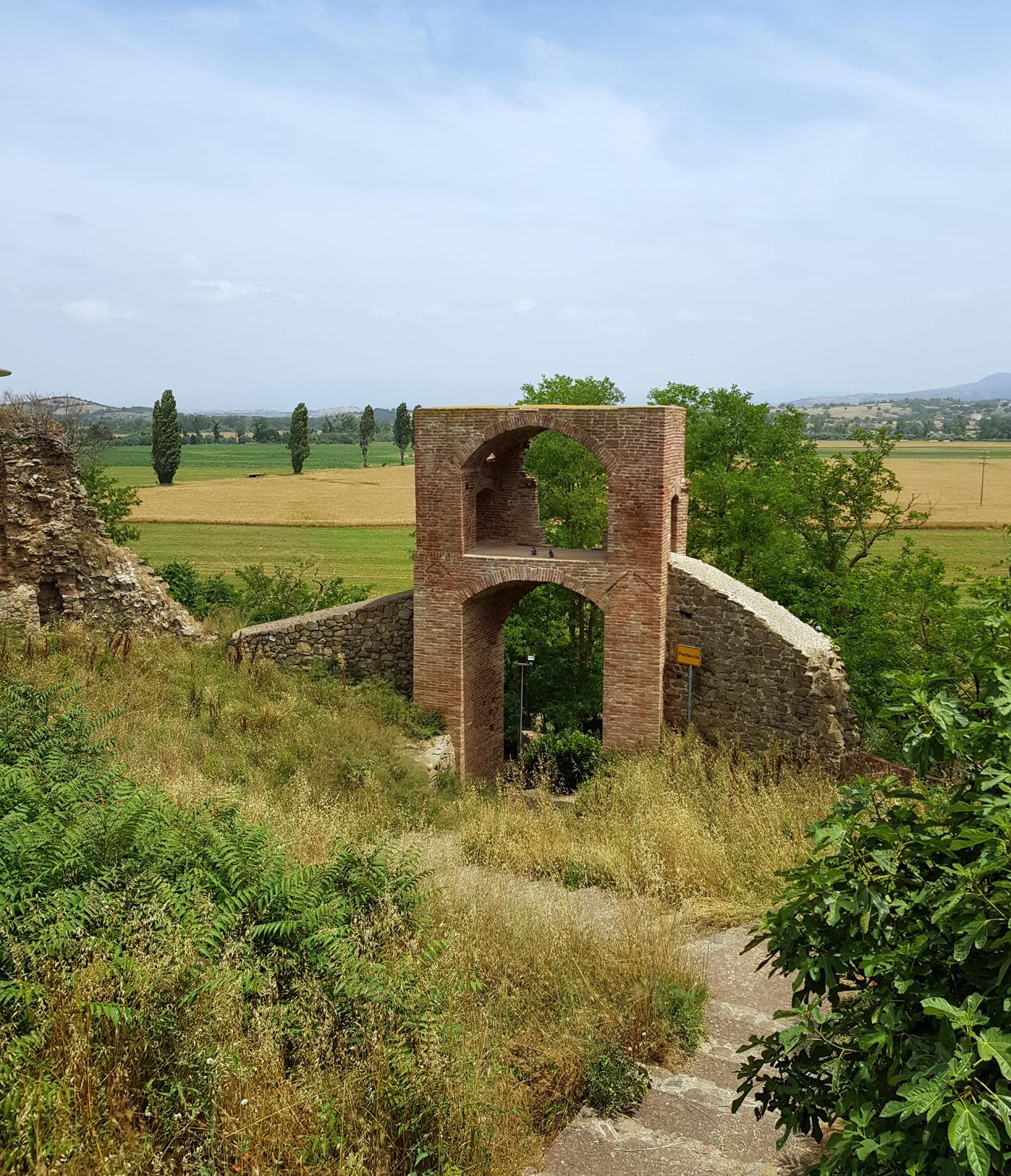
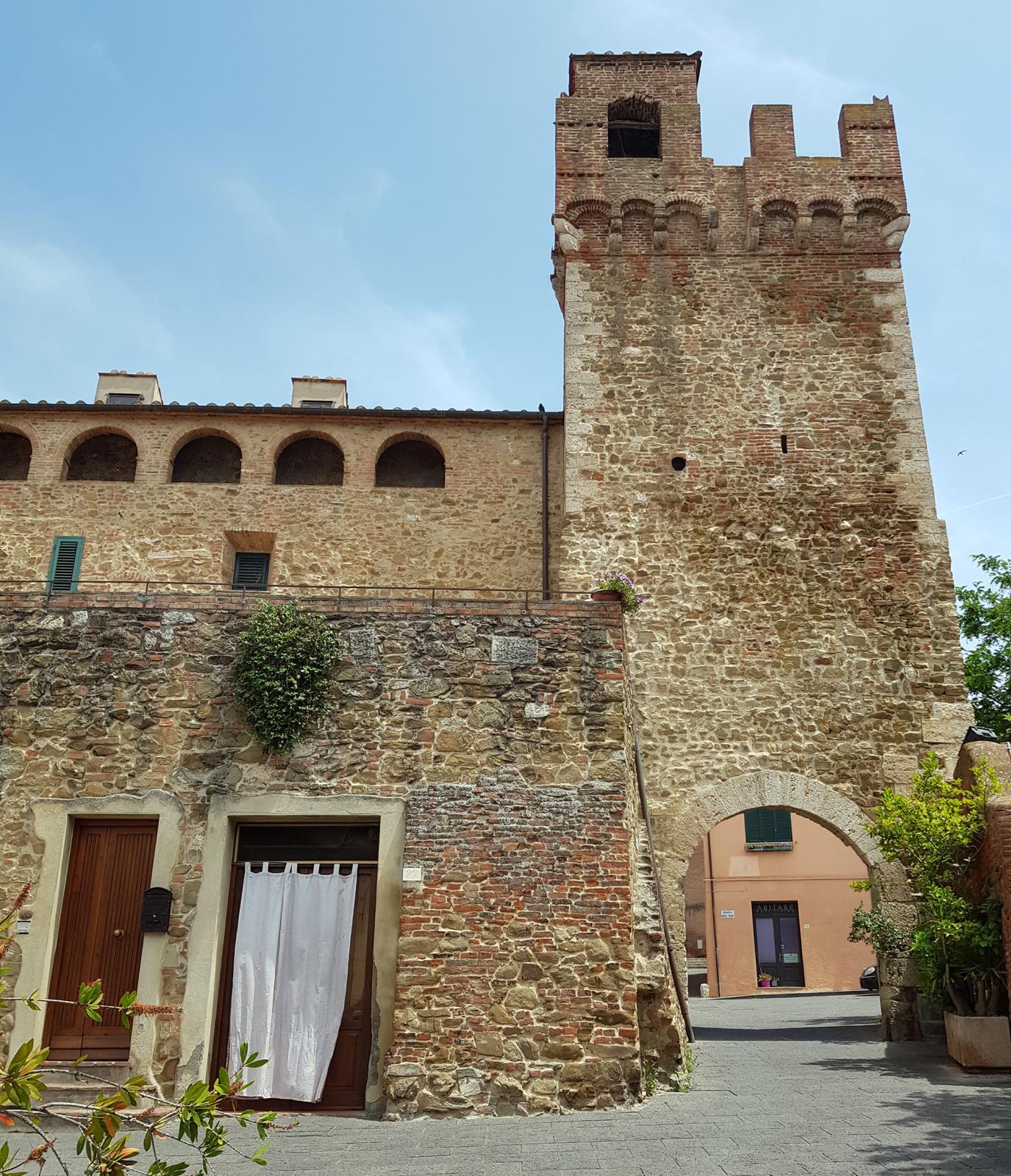
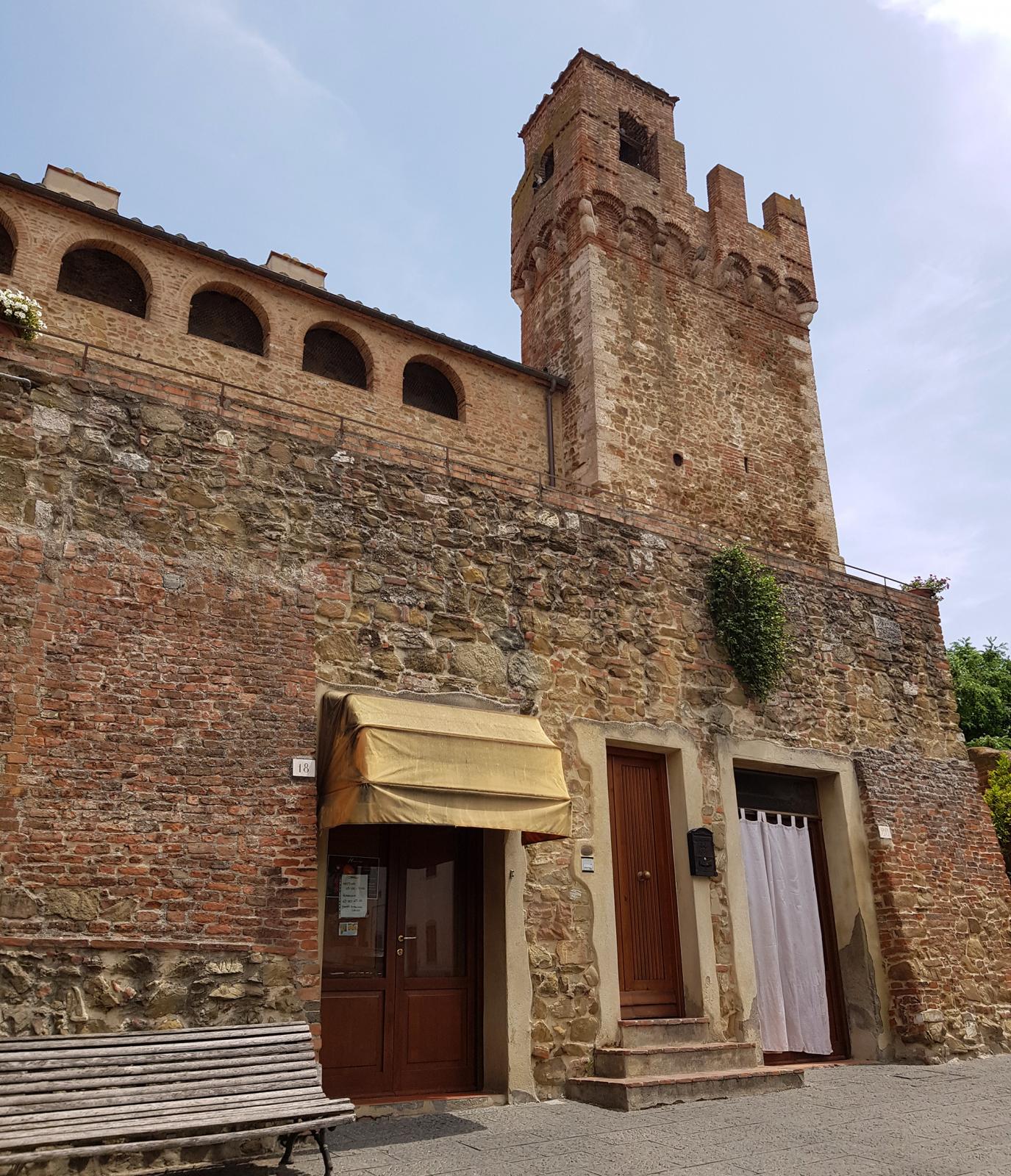
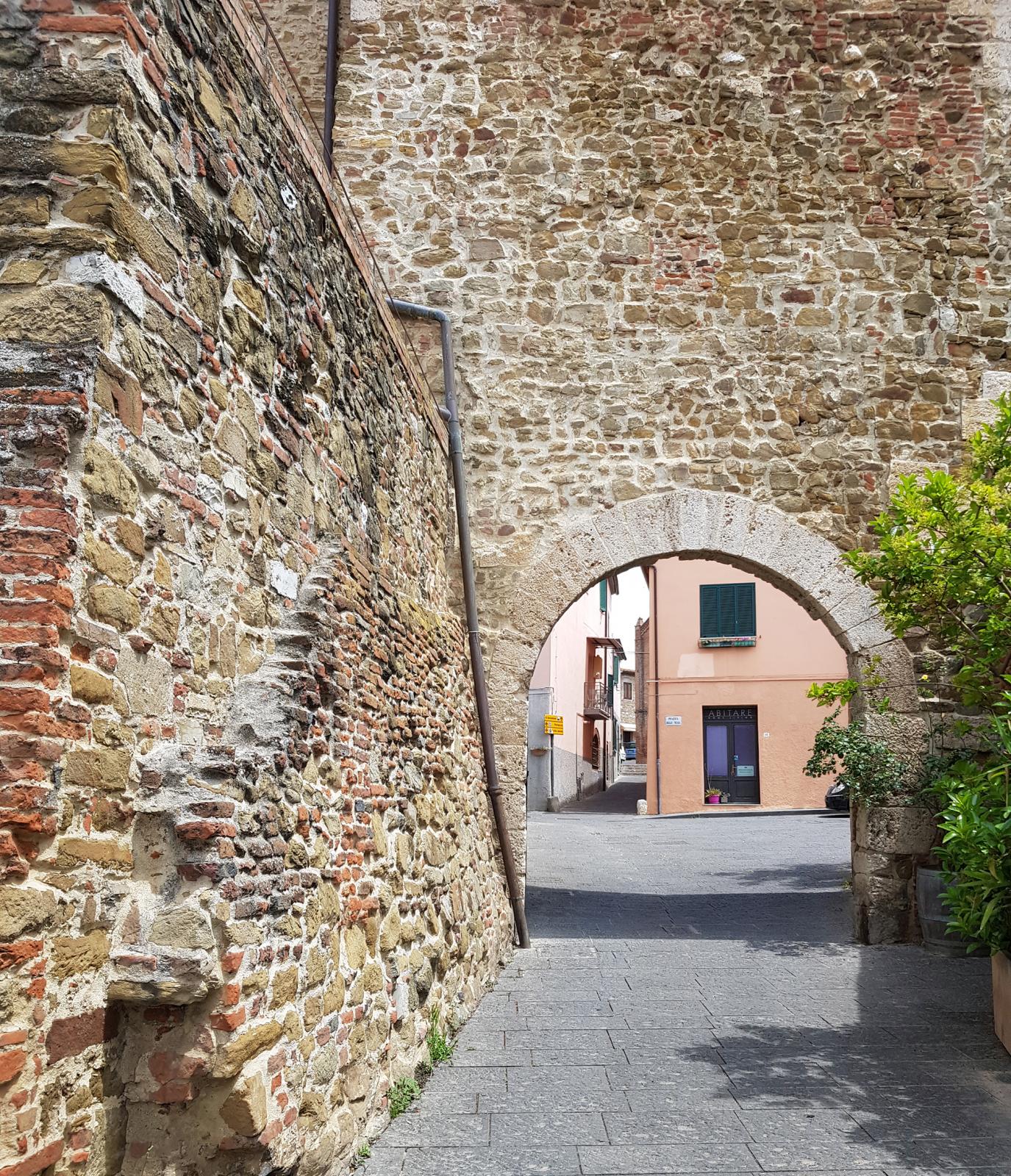
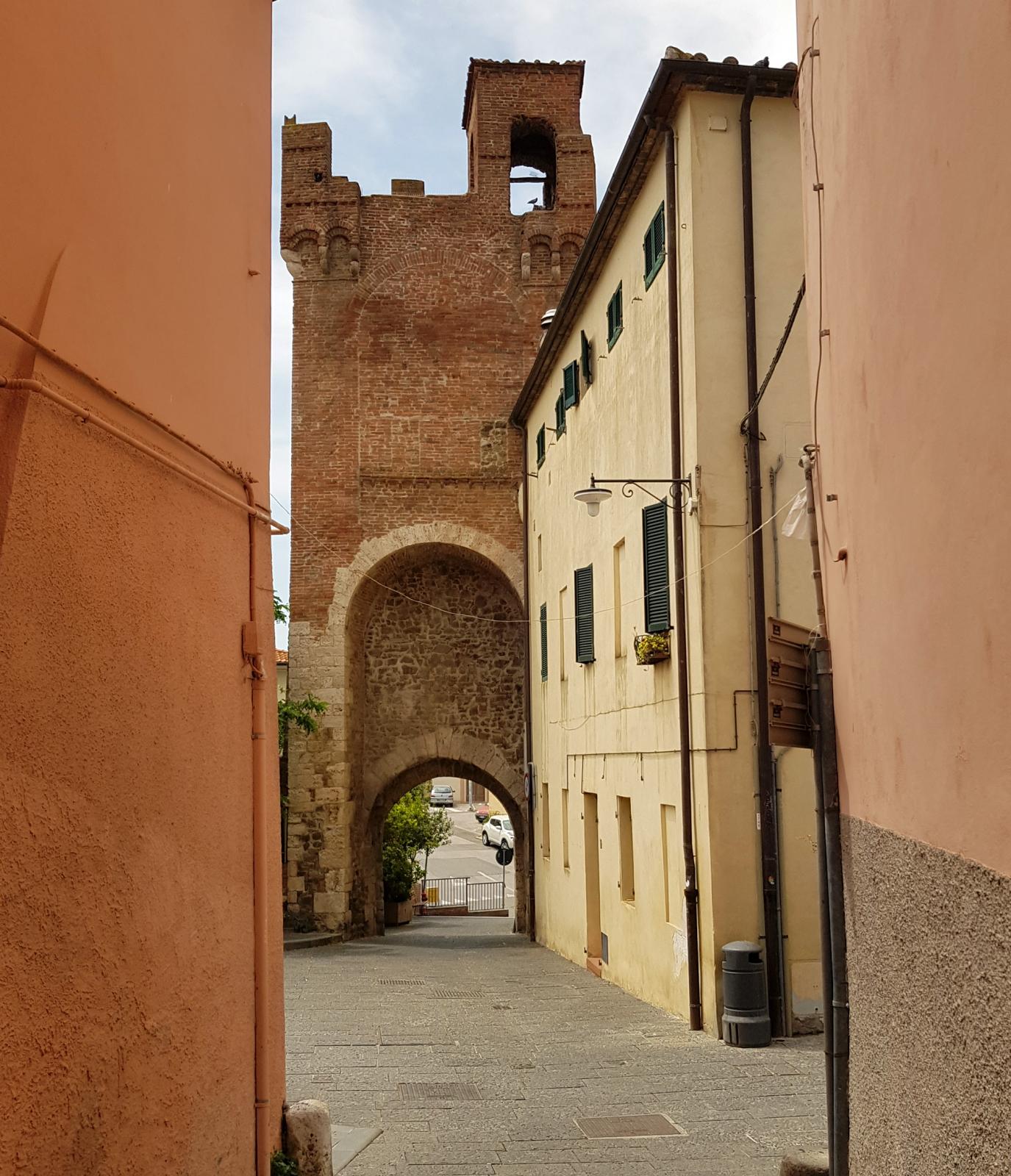
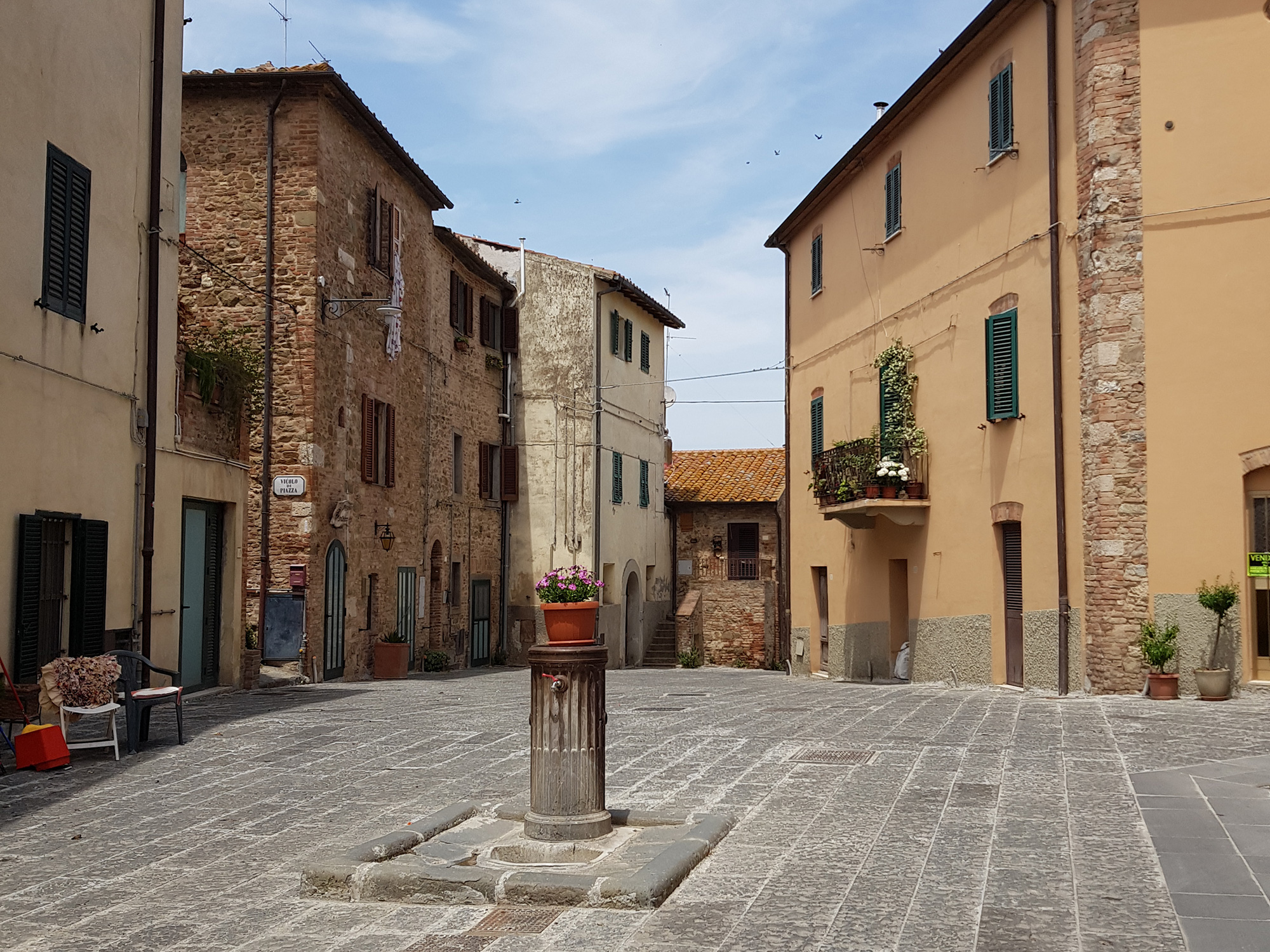
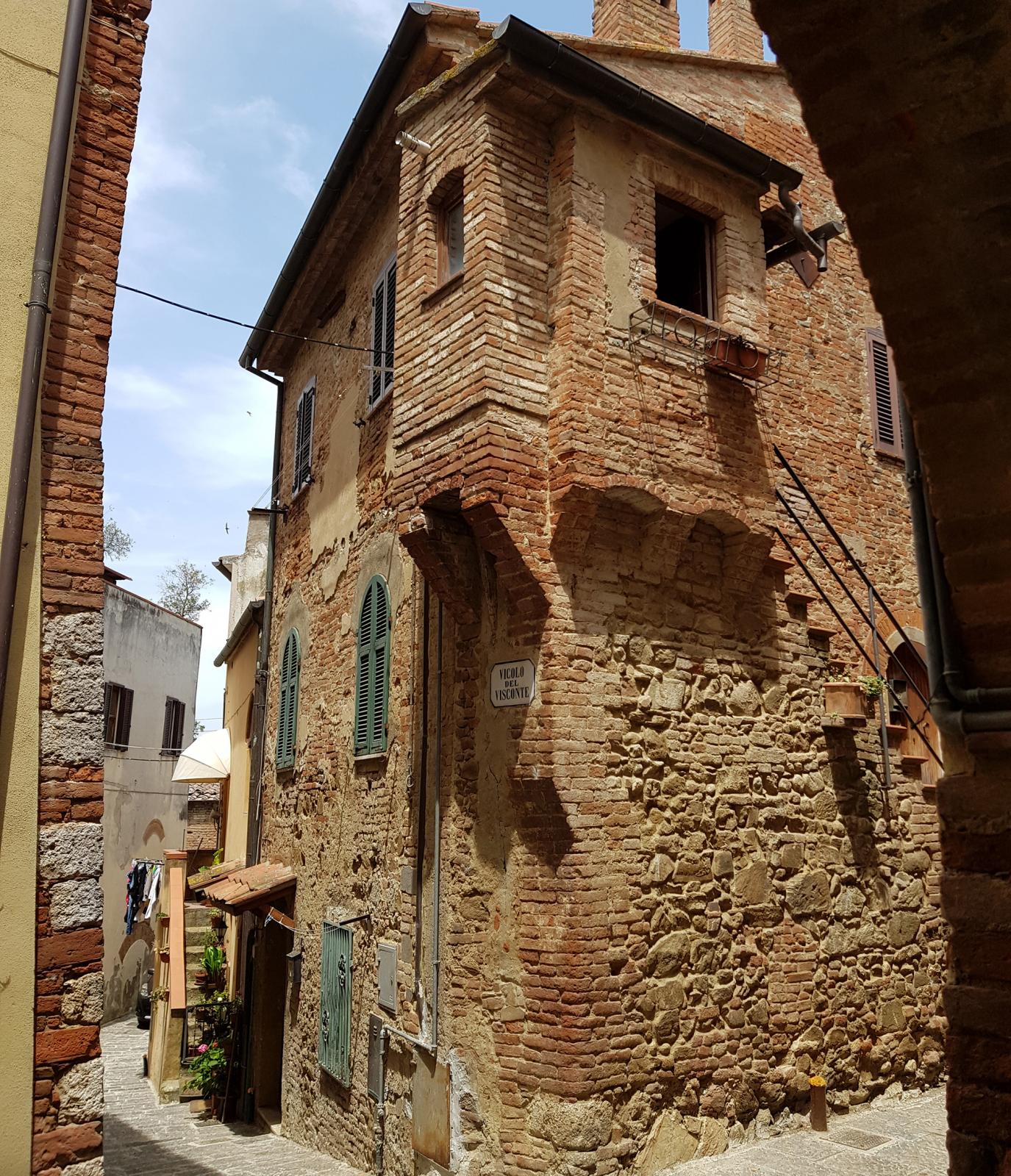








How to reach
Istia d' Ombrone can be reached following the SS223 until the exit of Roselle and from here the indications for Scansano.
History
Istia dominates the Ombrone river from the top of a modest hill at the margin of the plain of Grosseto and, thanks to its ford, was an important node of the Etruscan-Roman and medieval road networks. There are still two clearly visible nuclei, one at the summit of the hill and the other below. The most ancient circuit of walls that encloses the 'acropolis', has a rectangular shape and was constructed using large sandstone blocks and elements of varied origin (also a Roman memorial stone) joined together with mortar. Inside once rises the keep; today it is no longer recognizable. All the area is private property and not visible. The external walls that entirely encircle the hill's base were equipped with two gates and constructed in two phases, the first in the low Middle Ages and the second in the 13th century.
The only important remnants are the gates, both endowed with double Sienese rounded arch: the first, called 'Portaccia', towards the river is now in ruin, while the other, the recently restored main gate, is opened in a beautiful tower still crowned with crenellation, machicolation, and a little bell-turret. The first citation of Istia dates back to 862 (with the name 'Iscle'), but it is not certain if the settlement was already fortified. It was one of the most ancient possessions of the Aldobrandeschi family.
The position favored the development of Istia as a center of exchanges, and since 1032, the walled town has become an important market. In 1137, Istia was sacked during the campaign of Arrigo of Bayern. In the following years, it was granted to the bishop of Grosseto to build here a palace (in ruin until a few years ago, today restored and incorporated into private properties). The property of the castle of Istia to the bishop of Roselle before and of Grosseto then was confirmed in 1188 by a papal bull, but the patronage on the zone remained deeply in the hands of the Aldobrandeschi. In 1228, the bishop placed the castle under the control of Siena, but in 1254, it was reconquered, together with Roselle, by Umberto of the Aldobrandeschi. Near Istia were constructed, in co-ownership between the Episcopal authority of Grosseto and the Abbey of S.Galgano, some mills and a grancia. In 1273, the family of Santa Fiora succeeded the Aldobrandeschi. In 1287, Istia was subdued to Siena, but the definitive cession took place only in 1467. Later the castle was also property of the Piccolomini.